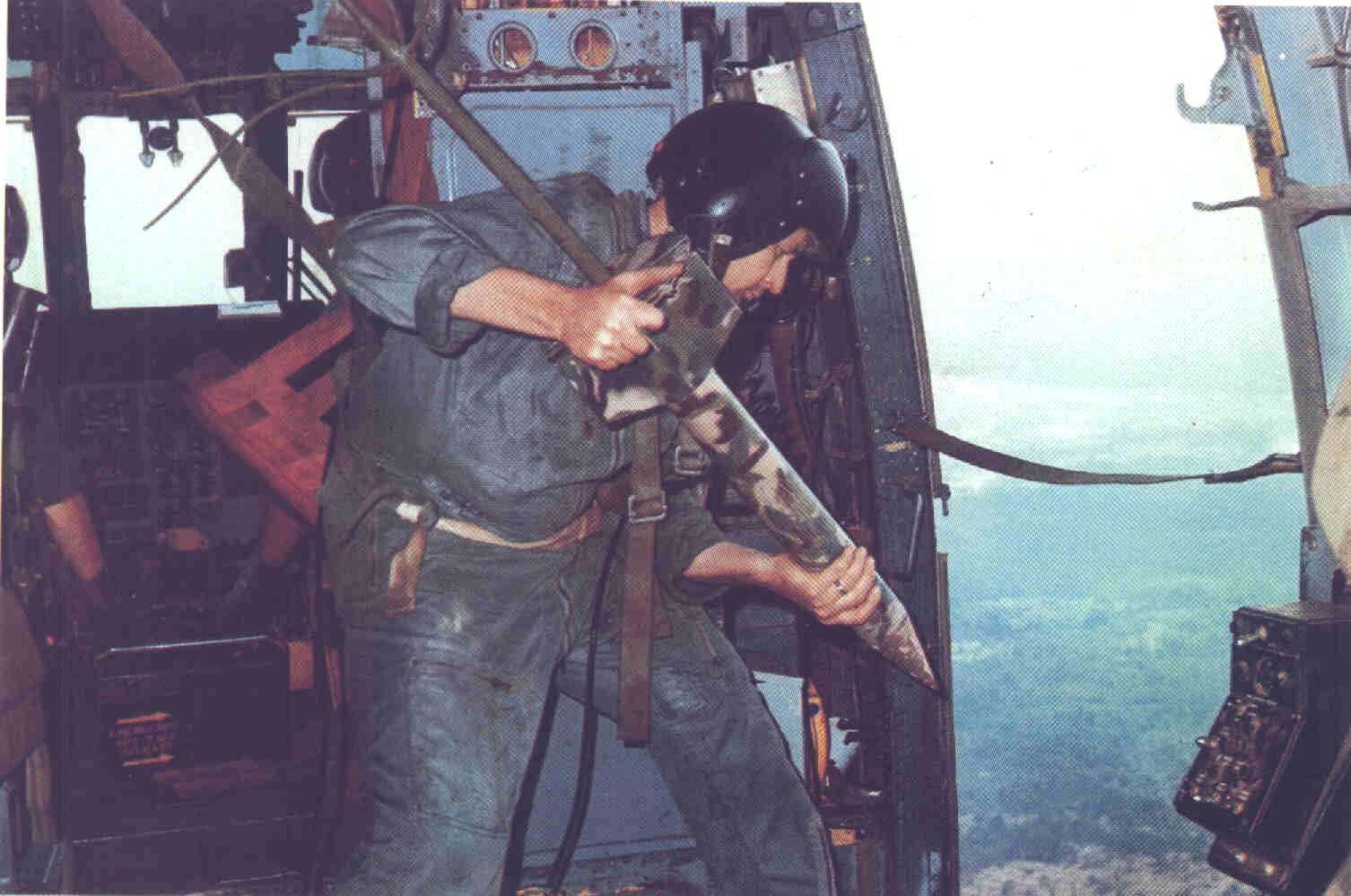The likeliest method of improving intelligence coverage seemed to be a system originally designed to ferret out trucks entering South Vietnam by way of Laos and the Ho Chi Minh trail. This surveillance system, whose development had been the responsibility of Army Gen. Alfred D. Starbird's Washington Defense Communications Planning Group, involved the use of electronic sensors accurately implanted along known or suspected routes of North Vietnamese infiltration. There were two basic types of sensor: seismic, triggered by shock waves passing through the earth; and acoustic, activated by sound waves that traveled through the air. These devices broadcast to an orbiting airplane, in this case a specially equipped Lockheed EC-121 which relayed the signal to an infiltration surveillance center at Nakhon Phanom in Thailand. Because of the distinctive shape of one of its antennas, this installation was called Dutch Mill. Here were the computers that compared the incoming signal with previously stored data to determine what had caused the sensor to begin broadcasting.
By way of example, and allowing for some oversimplification, a machine at Dutch Mill might compare the broadcast sound of a truck motor with the same sound recorded and planted in its memory. Since the two matched, the computer would advise the tactical analysis officer who made the query that a truck had activated this particular sensor. As other sensing devices successively reported this same sound, the tactical analysis officers could determine the route the truck was taking and calculate its speed. (The foregoing is taken from "Air Power and the Fight for Khe Sanh)
The Battle for Tchepone
The goal of Task Force Alpha was nothing less than the starvation of the Viet Cong and NVA by shutting down the Ho Chi Minh Trail. Since OPLAN EL PASO (General Westmoreland's original plan to invade Laos in 1965 or 1966 and seize the critical road junction at Tchepone) had been disapproved by the White House, the Battle for Tchepone became an air campaign. Units from other bases in Thailand would contribute but the beginning of the process was the collection of intelligence. And sensors were at the heart of that collection effort.
Prior to the arrival of the 21st Helicopter Squadron, a Navy squadron, VO-67, using OP-2E Neptune aircraft delivered sensors over the trail. In a foreshadowing of our won experience, VO-67 lost several aircraft in just a few weeks after having worked successfully for some time and the decision was made to withdraw them from their perilous mission. Before they departed they had left behind an interesting bar game called "Carrier Landing"... A game that some would find painfully difficult to master. :-)
